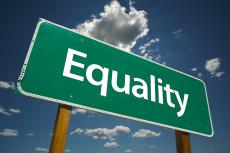Sport and Inequality Policies
A claim running through the history of modern sport has been that it is an arena where people can play largely unconstrained by inequalities of the wider society. Sport is special, according to this discourse, because all players are required to follow the same rules, and consequently sport is inherently fair. A second, related, assertion has been that sport has a distinctive capability to undermine some of the inequalities found in societies by, for example, closing social and economic distances between people, enhancing knowledge, skills and understanding, and creating a sense of empowerment and a change in the locus of control in the lives of marginalised groups. Accordingly, the widely held belief that sport is a special setting, a level playing field, with an inherent power to transform individuals and communities can be found in countless policy documents and programmes. Whether these claims are valid or of courses is a different matter.
Sport is now well-established as both a tool and context of social policy, and there is a sense of an acceleration of its recruitment to social policy. With this acceptance has come a demand that claims on behalf of sport need to be more specific, measurable, and realistic if they are to remain accepted features of policy. Even politicians have recognised the need for something more substantial than rhetoric, as was expressed by the Former British Minister Tony Blair when he enthusiastically endorsed the use of sport so tall of social policy, but it did add the caveat that anecdotal evidence that sport is good for you was no longer enough.
Perhaps the most visible international policy statement of the supposed benefits of sport is UNESCO’s International Charter of Physical Education, Physical Activity and Sport adopted in 2015. Surprisingly, the 1978 version of the Charter made no mention at all of equality (although it did refer to more hard-to-pin-down concepts, such as social progress, and the development of fair play, which is essential not only to sport itself but also to life in society. The revised Charter, in contrast, was explicit in its insistence of both claims made of equality in sport, especially gender equality: as an equal setting, e.g., Equal opportunity to participate and be involved, at all decision-making levels … is a right of every girl and every woman that must be actively enforced, and as an equalising setting, e.g., sport must be organized carefully and thoughtfully in order to realize successfully the potential for promoting ethical and educational values such as equality, fair play and honesty, excellence, fun and joy, teamwork, commitment, respect for rules and laws, respect for self and other participants, courage, community spirit and solidarity.
The development of the inclusive, and in particular the gender inclusive approach can also be tracked to other inter-governmental organisations. The Council of Europe adopted the first European Sport for All Charter in the 1970s, emphasising an inclusive approach to sport and physical activity, stating that Every individual shall have the right to participate in sport. The most recent advancement has been the Recommendation of the Committee of Ministers to Member States on Gender Mainstreaming in Sport. Acknowledging all the developments on an international policy level, it recognised that gender inequality is de facto still present. To address this issue the harmonised, comprehensive effort on all levels of institutions and actors were called to be implemented.
There is an obvious urgency for policy in sport on different levels to challenge inequality. Various interest groups have been more or less successfully advocating for changes, and those changes are slowly to be realized. However, now that some policies are in place, their suitability and efficacy need to be examined honestly, and, potentially adapted.
A question to the readers of this issue of ICSSPE News is how best to influence governmental and non-governmental organisations involved in sport, physical activity and physical education to develop or reflect on their existing policies for equality in sport. What are the mechanisms for challenging social inequality in sport, physical activity and physical education? Who are the key stakeholders? What are the main policy drivers?
We invite all ICSSPE members and other audience to submit their thoughts to icsspeicsspe.org

